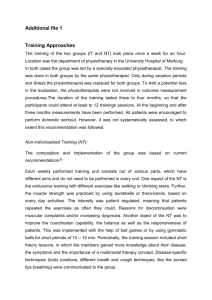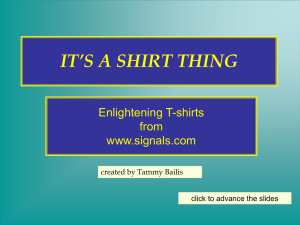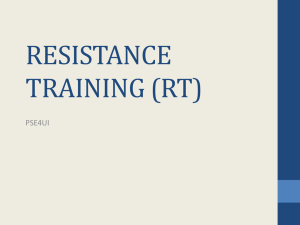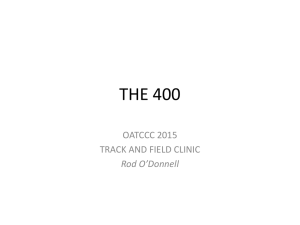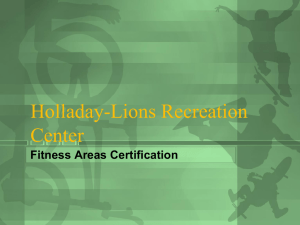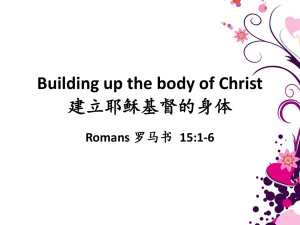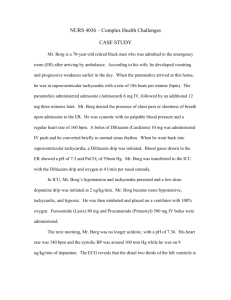HOW TO CHANGE THE PHYSICAL ACTIVITY? (5 minutes)
advertisement
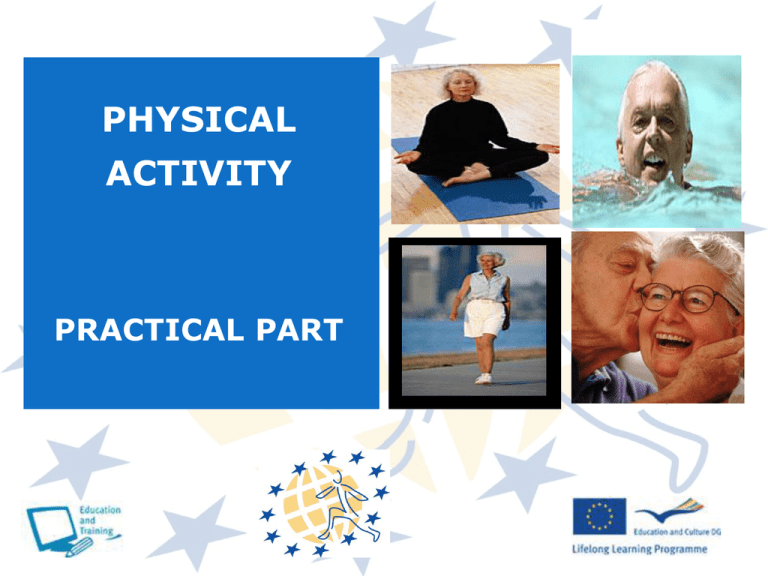
PHYSICAL ACTIVITY PRACTICAL PART INTRODUCTION Brief summary of what has been dealed in the theoretical sesion, remarking the idea of changing the behaviour. OBJECTIVE: TO IMPROVE THE PHYSICAL ACTIVITY Once the risks have been explained and the senior has been motivated about the importance of obtaining this objective… HOW TO CHANGE THE PHYSICAL ACTIVITY? (5 minutes) HOW TO CHANGE THE PHYSICAL ACTIVITY? STEPS: 1. Initial assessment about the possible risks or contraindications (PAR-Q (Physical Activity Readiness Questionnaire) and/or consult a doctor) …................. 10 MINUTES 2. Establishment of an improvement measurable objectives …..................... 25 MINUTES plan with (PASA) INITIAL ASSESSMENT PAR-Q (Physical Activity Readiness Questionnaire): to prepare a questionnaire to be filled in by each participant. YES to one or more questions: visit a doctor NO to all the questions: an exercise plan can be developed. ONCE I KNOW THAT I CAN START WITH AN EXERCISE PROGRAMME, WHAT SHOULD I KNOW? FACTORS TO TAKE INTO ACCOUNT TYPE OF EXERCISE: cardiovascular endurance, strength and balance, flexibility FREQUENCY AND TIME: WHO (World Health Organisation) and ACSM (American College of Sports Medicine) recommendations. INTENSITY: Borg Scale TYPES OF EXERCISES A brief explanation about the recommended type of exercises to do will be done. CARDIOVASCULAR STRENGTH ENDURANCE AND STABILITY FLEXIBILITY CARDIOVASCULAR ENDURANCE “Endurance is the physical and psychical capacity to resist to relatively long efforts and / or the capacity of fast recovery after the efforts done” Grosser, M. (1989) en Navarro Valdivielso, F. (1999) Participants will make a list of possible activities they do in their lifes or they know about them. They will distinguish between moderate and strong exercises. Results will be discussed. After that a list of possible activities will be shown (moderate and strong exercises). MODERATE ACTIVITIES Swimming Golf (without car) Riding a bike Tennis (pairs) Riding an exercise bike Ping Pong Gardening Rowing Walking fast Dancing Cleaning the apartment VIGOROUS ACTIVITIES Go up stairs climbing hills / steps or Do many continuous swimming rounds in the swimming pool Trekking (in the mountains) Energetic hiking Skying Tennis Trotting STRENGTH AND BALANCE Strength: Capacity of the muscles to apply a tension against a resistance (Larson) Participants will make a list of possible activities they do in their lifes or they know about them. They will distinguish between moderate and strong exercises. Results will be discussed. After that a list of possible activities will be shown (moderate and strong exercises). STRENGTH AND BALANCE STRENGTH AND BALANCE STRENGTH AND BALANCE FLEXIBILITY Capacity of the articulations to make possible the biggest extension of the body movements. Participants will make a list of possible activities they do in their lifes or they know about them. They will distinguish between moderate and strong exercises. Results will be discussed. After that a list of possible activities will be shown (moderate and strong exercises). FLEXIBILITY FLEXIBILITY FREQUENCY AND TIME OBJETIVE: 30 minutes of moderate physical activity 5 days a week or 20 minutes of strong physical activity 3 days a week. PROGRESSION: to increase progressively time and frequency. BORG SCALE INTENSITY Less effort 6 7 Very, very easy 8 9 Very easy 10 Endurance 11 easy area 12 13 More or less difficult 14 15 Difficult Strengthening 16 area 17 Very difficult 18 19 Very, very difficult 20 More effort INTENSITY According to the levels of physical activity, we can distinguish three groups. A different intensity will be recommended to each group: Sedentary profile (nowadays they do not make any physical activity). 7 to 9 Borg Scale Active-pasive profile (they make physical exercise, but they do not arrive to ASCM/WHO recommendations). 10 to 13 Borg Scale Active profile (they fulfil ASCM/WHO recommendations). From 13 Borg Scale To increase progressively the intensity! EXERCISE PLAN First of all an exemple for each group is explained (beginner, intermediate and advanced). After that they fill in a weekly plan. Participants receive the information about the exercises to make and the weekly sheet. They should place in each square the exercise they want to make and the more accessible to make. They should fill in a sheet weekly and commit themselves to carry it our. By the end of the week an assessment should be done. BEGINNER (it corresponds with a sedentary profile) Sunday Monday Tuesday Wednesday Thursday Friday Endurance Endurance Endurance 20 min. Walking 7 to 9 Borg 20 min. Walking 7 to 9 Borg 20 min. Walking 7 to 9 Borg Saturday INTERMEDIATE (it corresponds with an active-pasive profile) Sunday Monday Tuesday Endurance 30 min. Cycling 10 to13 Borg Wednesday Endurance 30 min. Swimming 10 to 13 Borg Strengthening / Balance 15 min. Legs Stretching Thursday Arms Stretching Friday Endurance 30 min. Cycling 10 to13 Borg Strengthening / Balance 15 min. Legs Stretching Arms Stretching Legs Stretching Saturday ADVANCED (it corresponds with an active profile) Sunday Monday Tuesday Wednesday Thursday Endurance 30’ Endurance 30’ Endurance 30’ Endurance 30’ Strengthening / Balance 15’ to 20’ Stretching 10’ Stretching 10’ Friday Saturday Endurance 30’ Strengthening / Balance 15’ to 20’ Stretching 10’ Stretching 10’ Stretching 10’ THANK YOU VERY MUCH FOR YOUR ATTENTION
